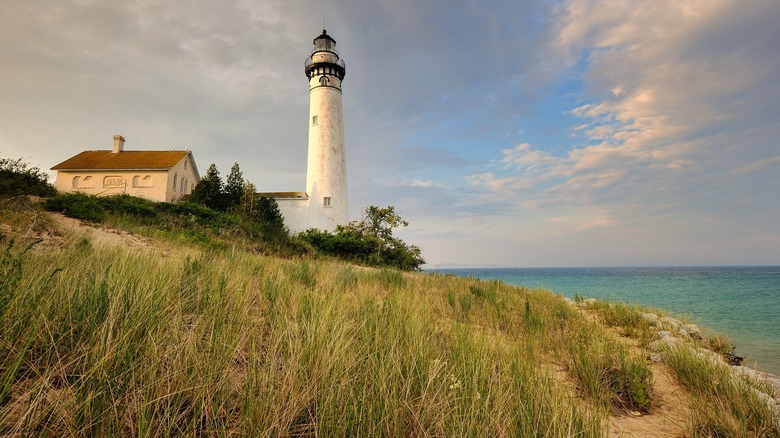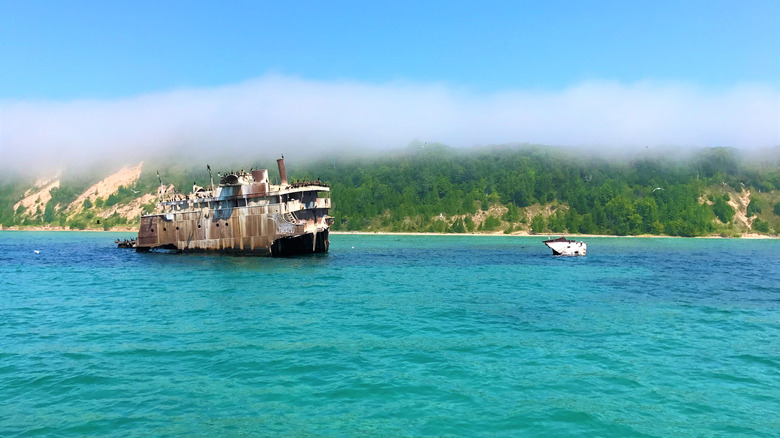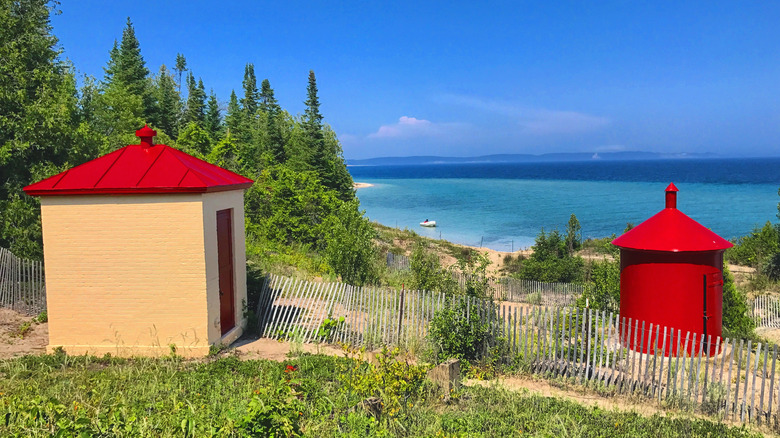Capture Lighthouse Views And Tranquil Sandy Bliss On A Remote Lake Michigan Island
For many, sandy beaches and lighthouses conjure images of the East Coast, Florida, or maybe even faraway lands. But northerners know that they've got some of the most beautiful waterfront real estate around, especially right on the shores of Lake Michigan. With stunning and remote paradises like Bois Blanc Island dotted around the state, Michigan is full of surprises. A chain of pristine island gems stretches south from the Straits of Mackinac, ending at tranquil and blissful South Manitou Island.
South Manitou and its sister island to the north are part of the Sleeping Bear Dunes National Lakeshore. It's a relaxing spot only accessible by boat and has no facilities once you get there — no restaurants or hotels, nor any other conveniences or distractions. What you will find on South Mantiou are miles of beautiful beaches, hiking trails with historic buildings, shipwrecks to explore, and a cedar forest with huge trees over 500 years old.
South Manitou is about 16 miles west of Leland. It has a little over 8-square-miles of land but offers plenty of space for visitors to spread out. Camping is permitted on the island, and with so much to explore, staying for a few nights really is the best way to see it all. It's also a great way to appreciate this dark-sky national park, a great spot for stargazing.
Set sail and explore South Manitou Island
Getting to South Manitou is a 1.5-hour ferry ride from nearby Leland, a small coastal town about 40 minutes by car from beautiful and underappreciated Traverse City, Michigan. Manitou Island Transit has service for both day trippers and overnight campers. No matter which option you choose, you're only allowed to bring as much gear as you can carry, so plan on packing light. That means that camping on South Manitou is a backpacking affair — no carts or wagons are allowed. The ferry operates from late May until October, with dates and times differing for day trippers and campers. The round-trip ticket costs $45 for adults and $23 for kids 12 and under.
If you visit the island, you must also have a park pass. Sleeping Bear Dunes, part of the National Park Service, accepts nationwide America the Beautiful passes or sells a $25 one-week pass. The pass is valid for the Manitou Islands and the mainland portions of the park, which stretch along Highway M-22 on Michigan's west coast.
Once you're on the island, exploring by foot is the thing to do. The village is a short walk from the ferry dock. The village was once home to members of the Coast Guard (and the earlier Life-Saving Service), the lighthouse keepers, and their families. Start at the Island Visitor Center, housed in the former village general store. They have photographs and displays that depict life on the island back in the day.
Hiking and camping on South Manitou Island
The island has no cars or bikes, although you can take wagon tours out of the village. Shorter hikes include the half-mile trip to the lighthouse, open for you to climb the 117 steps to the top for panoramic views of Manitou Passage. Longer hikes allow you to explore the island's old farms and the old-growth cedar forest. To view or swim the 1960 'Francisco Morazan' shipwreck, you walk about 2.5 miles from the ferry dock to the opposite side of the island. To hike the parameter of the island beaches is approximately ten miles. It's also possible to hike half the island on the beach and then return via the trails for a shorter walk.
Camping on South Manitou is a special treat. To camp, you must purchase a Backcountry Use Permit from the park. A ranger will meet you at the dock and complete the camper registration. Campers must adhere to Leave No Trace principles and pack in and out everything they need. You can collect dead wood for fires, but open fires are only allowed in the communal fire rings in the group camping areas. Individual campsites are spread around the island, and many spots overlook the gorgeous beaches.
When planning a trip to South Manitou, preparation is key. Bathrooms and water are available in the village, but most campers filter their drinking water from the lake. Bring comfortable hiking shoes, enough food for your whole stay, and be prepared for some bugs, too — mosquitoes, ticks, and flies are common. The best time to visit the Manitou Islands is from May to October when the ferry runs. But, this is also the peak time of good weather in the region, with comfortable daytime highs between 60 and 75 degrees and cool nighttime lows in the 50s and 60s.


